Q&A: Dr. Donny Zhao (Orthopedics)


Dr. Donny Zhao is originally from Hubei, China, and also studied there, through the Hubei University of Traditional Chinese Medicine’s seven year orthopedics program. With over ten years of experience in orthopedics and sports medicine, what makes Dr. Donny unique is that he can offer multiple perspectives during diagnosis and treatment given his background in both Traditional Chinese and Western medicine.
Joining UP in August of 2021, Dr. Donny says he has been profoundly impressed by his experience working with the company and how every type of rehabilitation service seems to seamlessly integrate together. Read on to learn more about his experience working at UP, how his passions relate to his field of study and how his experience has helped others to heal.


It’s been four years since you joined UP. Can you tell us about your experience so far?
[The experience at UP] has profoundly impressed me in that modern medicine – especially musculoskeletal health restoration – is far more than just surgery or medication; it’s a multi-stage, multidisciplinary, and systematic process.
In the clinical environment, orthopedics and rehabilitation are truly seamlessly integrated. This model allows me to more comprehensively understand the [patient’s pain] from both the perspectives of structural damage and functional dysfunction. Through the team’s early intervention and long-term follow-up, we can more clearly see the patient’s entire journey from acute pain to functional recovery.
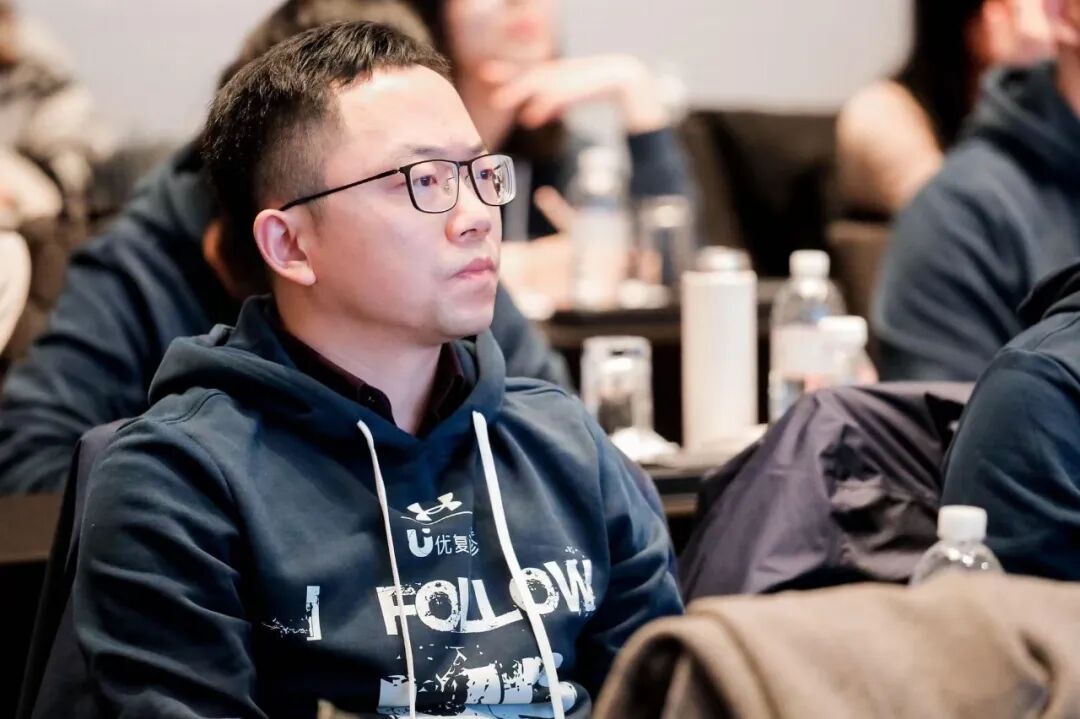
What made you first decide to work in orthopedics?
For me, choosing orthopedics and ultimately becoming an orthopedic and sports medicine physician was not just a matter of professional choice, but a two-way journey of personal and professional fulfillment. Medicine empowers me to help others, while my love of martial arts training inspires me to understand the philosophy of the body. Sports medicine is the ideal place for me to combine these two and fulfill my original aspirations.
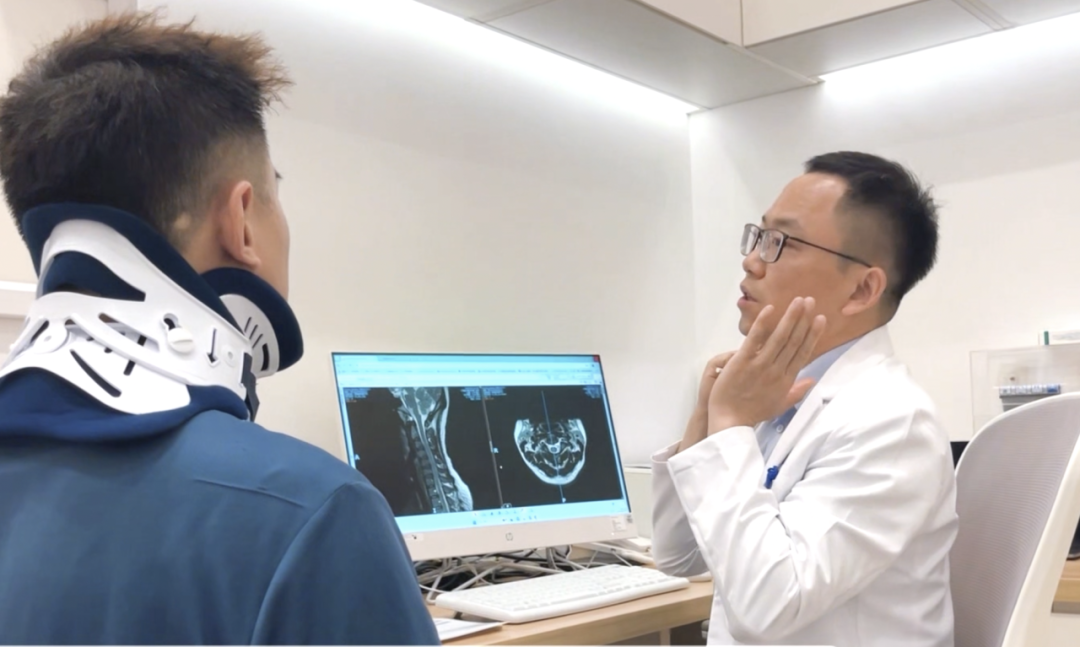
You study martial arts, and that supports your work. Could you tell us more about that, and any other passions that influence your work?
Outside of work, I’m passionate about reading and traditional martial arts. Reading is a never-ending cognitive bridge for me, allowing me to continuously explore the world. Martial arts, such as Tai Chi and Bajiquan, are also a never-ending path of self-discovery. It’s not just a physical exercise, but also a way to understand and express myself. My keen understanding of body usage patterns subtly influences my clinical work, allowing me to better understand patients’ movement disorders and compensation patterns.
These two factors have given me a long-term approach to life—medicine and life are not sprints, but marathons that require perseverance, faith, and passion.

You mention that working at UP allows a patient to be supported in their healing journey through different modalities. How do you see the relationship between orthopedics and physical therapy?
Orthopedics focuses more on structural damage, while physical rehabilitation focuses on improving functional impairment. However, these two disciplines are by no means independent, but rather two sides of the same coin in understanding and addressing musculoskeletal disorders. They complement and enhance each other.
Orthopedics provides the structural foundation for rehabilitation, while rehabilitation truly realizes the value of orthopedic treatment. Only by closely integrating the two can we address not only the “disease on the image” but also the “disease in the person,” ultimately helping patients achieve the leap from “cured” to “completely recovered.”
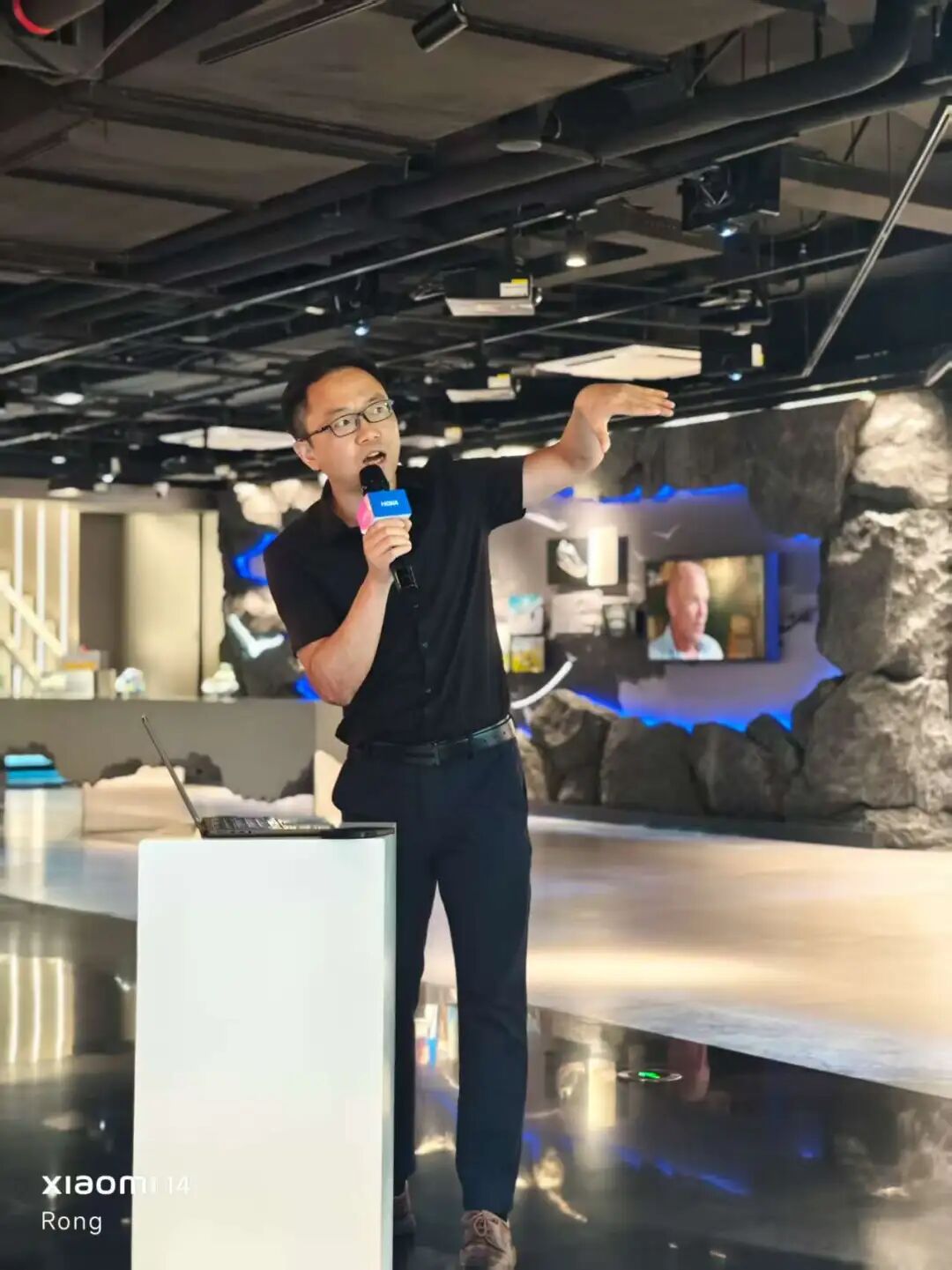
Could you tell us more about some of your specialities in particular?
My clinical work focuses on the diagnosis and treatment of orthopedic and sports-related injuries, but it is not limited to the traditional “reading images and prescribing medicine”. Under the guidance of the current national fitness craze, more and more people are engaging in running, fitness, ball games, skiing and other sports. As a result, the sports injuries that come with it are becoming more diverse and complex. My professional focus is on “real sports medicine”.
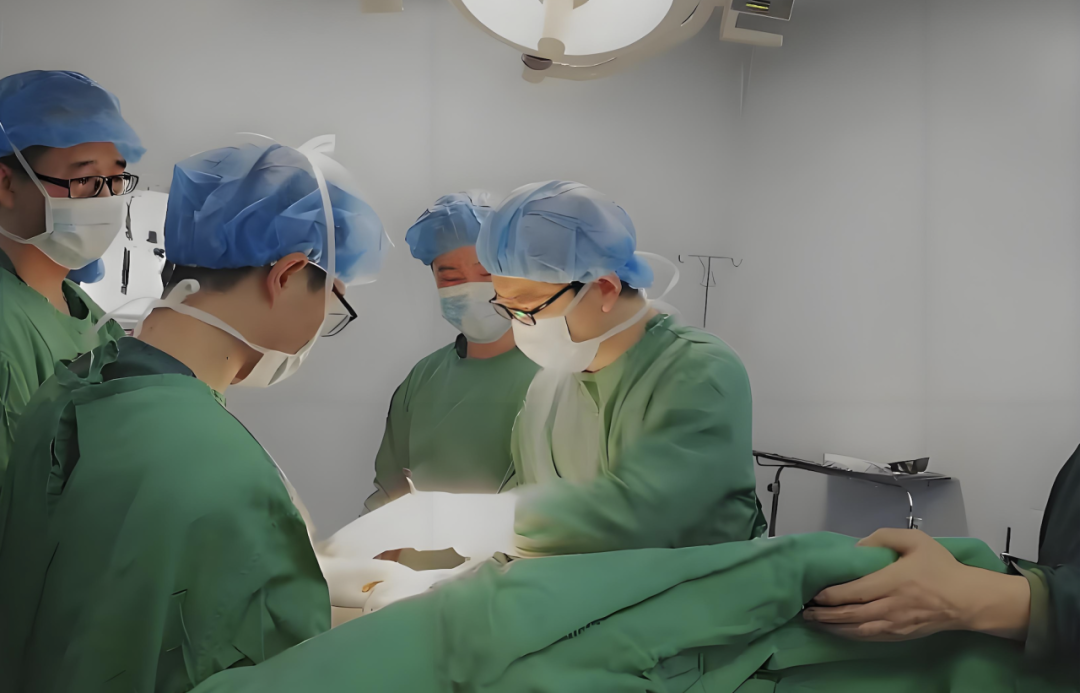
What do you mean by ‘real sports medicine’?
This encompasses not only post-injury diagnosis and treatment but also a comprehensive health management process encompassing scientific sports participation, sports risk management, precise injury treatment, and safe return to sport. My in-depth understanding and practical experience in a variety of common sports allow me to more accurately analyze the causes of injuries.
I also place particular emphasis on the critical “return to sport” phase, helping patients regain their pre-injury performance. I even optimize technique and strengthen weak links, allowing them to return to their beloved sport stronger and safer than before their injury.
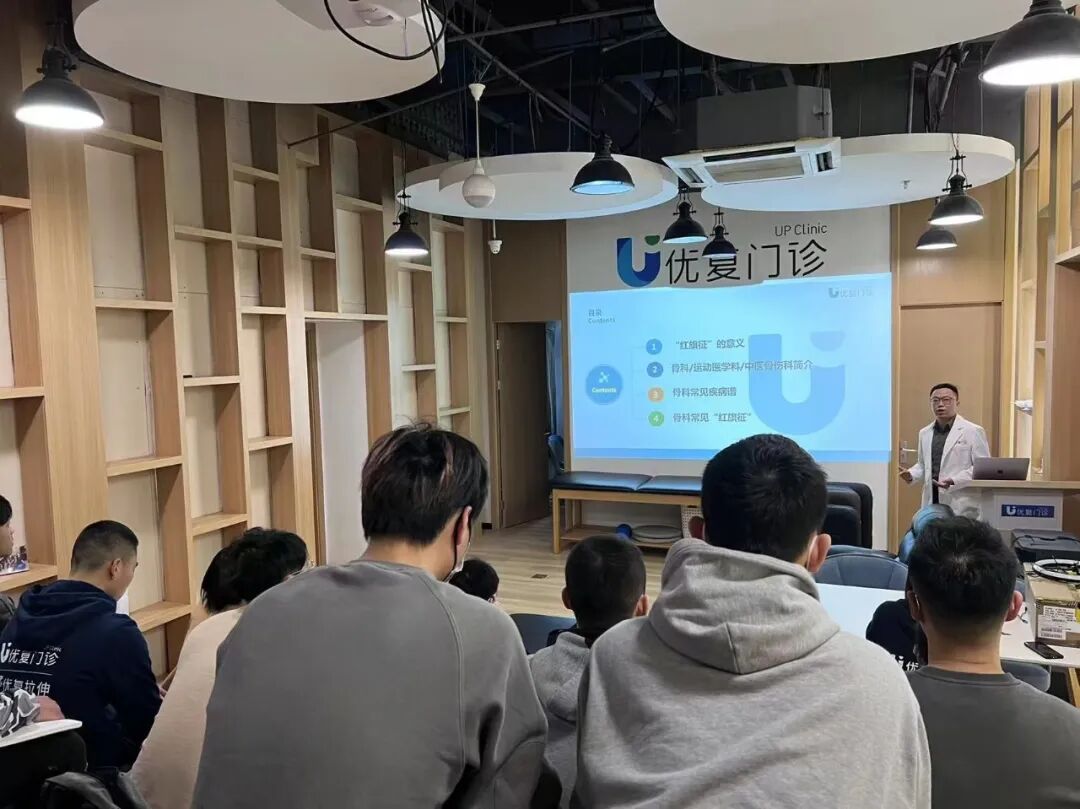
What do you see as one of the biggest challenges with patients?
In daily medical practice, I believe the greatest challenge in doctor-patient communication is achieving true understanding. This difficulty stems from inherent differences in medical knowledge, disease perceptions, and experiences—information gaps and professional barriers.
First, it requires the doctor to truly understand the patient. This goes far beyond simply understanding the patient’s complaints and reviewing imaging. Every patient is a complete individual, with distinct pain experiences, psychological concerns, and functional needs. We need to shed the professional “jargon filter” and patiently listen to the real challenges behind their words, truly understanding their stories. This requires not only empathy but also the warmth of humanity embedded in professional judgment.
Another challenge is patients’ understanding of doctors and medical logic. Medicine is an evidence-based and logical discipline, but patients often lack this cognitive framework. They may not understand why rest is sometimes less effective than healthy exercise, or why pain persists despite seemingly minor issues on a film. They may even misunderstand the fragmented nature of online information. We need to use accessible language, clear metaphors, and visual demonstrations to “decode” the complex pathological mechanisms and treatment logic for patients, helping them develop reasonable expectations and understand the rationale for treatment, thereby enabling them to truly participate in their diagnosis and treatment.
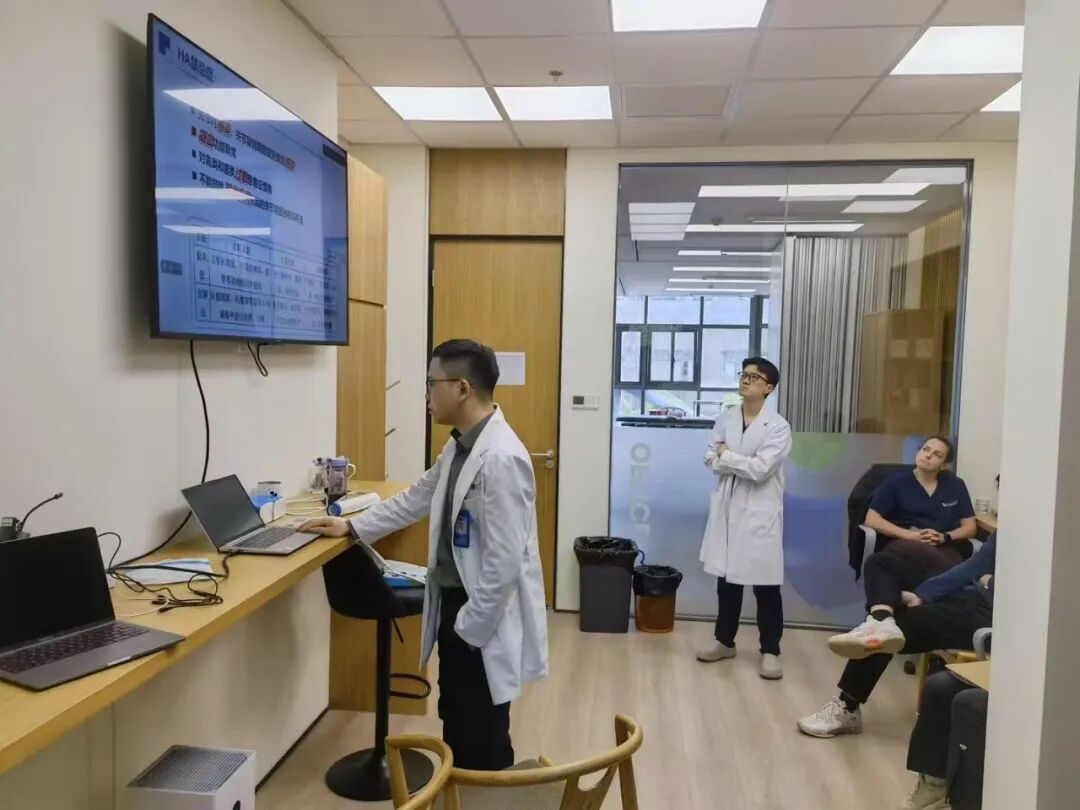
Thank you for explaining it like that – especially ‘misunderstanding the fragmented nature of online information – it happens all the time! Do you have any experience that you would like to share from treating any patients?
Whenever I’m asked, “Do you have a most unforgettable patient?” I always answer: It’s not any one particular patient who remains etched in my memory, but rather every person who walks into my clinic, each of whom, in their own unique way, allows me to deeply appreciate the depth and warmth of medicine. Each of them has been an important teacher in my career.
My understanding of “unforgettable” stems from the dialectical unity of “unity” and “particularity” within each patient. “Unity” lies in the fact that the occurrence and development of many diseases follow common pathological mechanisms and diagnostic and treatment principles, which provides the scientific foundation for our treatment plans. But even more important is their “particularity”—each patient’s varying age, occupation, exercise habits, mental state, and even life goals, all lead to distinct life stories and treatment demands behind the same diagnosis.
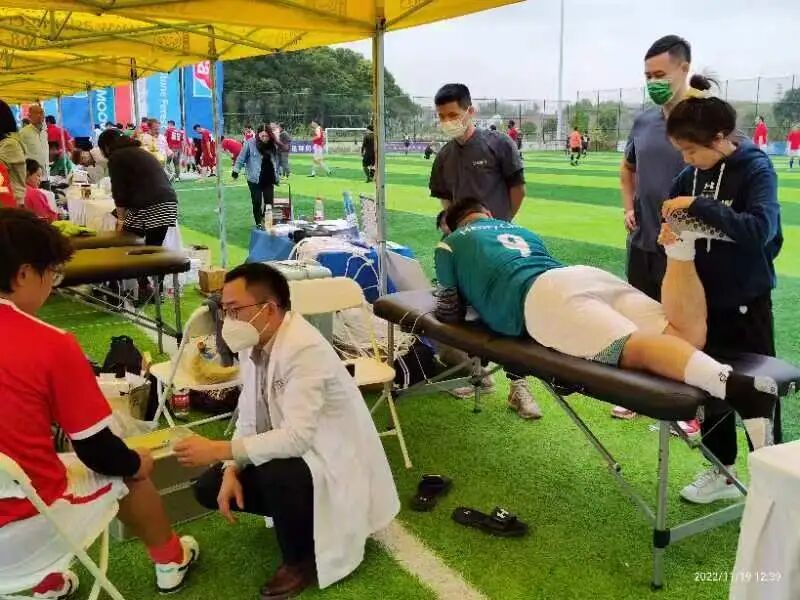
That’s beautiful. Before we wrap up, is there anything you would like to add about orthopedics and your approach to helping others heal?
I’ve always believed that pain or structural damage are often just symptoms. We need to uncover the root causes of the symptoms. In the musculoskeletal field, many issues stem from dysfunction or incorrect usage patterns. Therefore, our focus shouldn’t simply be on relieving symptoms, but rather on helping patients restore optimal function through assessment, education, and training, thereby fundamentally reducing the risk of recurrence.
If you’re a sports enthusiasta, whether you’re struggling with pain or looking to start exercising more scientifically and prevent injury, I hope to support you with a systematic approach to sports medicine, allowing you to exercise with peace of mind and achieve effective results.
UP Medical
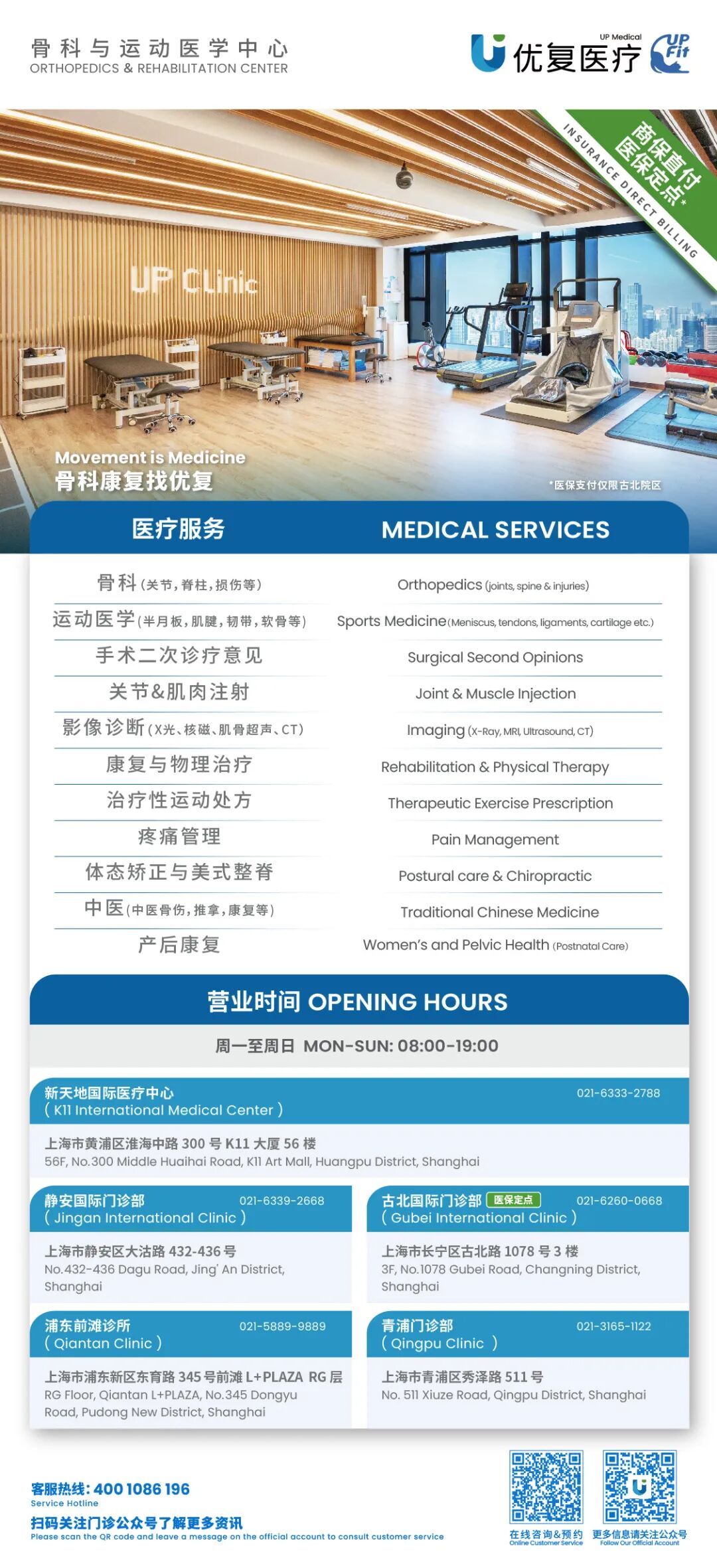
本篇文章来源于微信公众号: 上海优复康复医学门诊部

